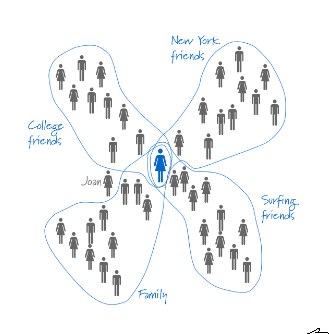This blog has some posts in portuguese that make sense to be written in portugese and not in English. My excuses to all my friends or readers who cannot read Portuguese, but nevertheless there is always very good translators in the web and I am sure you will not be dissappointed with my decison of making a Blog bilingual.
Thursday 11 November 2010
Tuesday 18 May 2010
E assessment tic
Check out this SlideShare Presentation:
Posted by
Joaquim Fernando da Silva
at
17:47
0
comments
![]()
Thursday 15 April 2010
Strong, Weak, & Temporary Ties
Strong, Weak, & Temporary Ties: "
Paul Adams, UX researcher at Google, is studying what sorts of relationships people have online. His latest piece, Designing for Social Interaction: Strong, Weak, & Temporary Ties shows how people mostly use social networks to map their life, not create a whole new online one:
“But the reality is, social networks rarely add to our number of connections. We’ve already met almost all the people we’re connected to on social networks. We’re already connected to these people offline. Social networks simply make the connections visible. For example, we often connect with old school friends, and catch up over a couple of wall posts. But rarely do we continue the conversation once we’ve connected, and over time we forget that the connections exist. In fact, Facebook users often have no interactions with up to 50% of their connections.1 When we study how people are interacting on social networks, we see that most interactions are with a very small subset of the people we’re connected to.
The average number of friends on Facebook is 130, and many users have many more. Yet despite having hundreds of friends, most people on Facebook only interact regularly with 4 to 7 people, and for 90% of Facebook users, 20% of their friends account for 70% of all interactions. We also see this with phone usage. We have hundreds of people in our phone contacts, yet 80% of phone calls are made to the same 4 people. We know dozens of people who use Skype, yet 80% of Skype calls are made to 2 people. Even when people play computer games online, they mostly play with people they know offline.”
This is important data, as it grounds the social interaction/UX designer in the reality that most people aren’t doing anything crazy online, they’re mostly cultivating and managing the relationships they had offline.
Paul then digs deep into what he calls temporary ties, those people we meet only quickly for some relatively important reason. I really like temporary ties as an extension of strong and weak ties because it suggests clear use cases to design for. When designing for those situations in which two people want to interact but have never met, you need a reputation framework and a way for people to provide feedback to each other. This helps people make a fast decision about whether or not to interact with their temporary tie.
Also check out Paul’s IASummit talk: Bridging the Gap between our online and offline lives
"
Posted by
Joaquim Fernando da Silva
at
23:14
0
comments
![]()
Tuesday 13 April 2010
Plataformas de criação de jogos
Existem muitas ferramentas de criação de jogos, além do Flash ou do Java. Recentemente descobri o unity e o silverlight que em conjunto com o flex permitem construir aplicações ricas para a internet (RIA). Um site interessante de acompanhar é o http://riapt.org
Posted by
Joaquim Fernando da Silva
at
08:25
0
comments
![]()
Thursday 11 February 2010
Encriptação de mensagens
A encriptação de dados, é muito simples, porém pouco utilizada. Deixo aqui duas pequenas notas sobre os procedimentos a efectuar.
1) A maneira mais simples será utilizar o Outlook para esse efeito. Para encriptar mensagens podem utilizar o tutorial existente no sitio da Microsoft.
Existe um video muito interessante que explica melhor a forma de encriptar o e-mail
Ver video
É possível ainda o envio de mensagens encriptadas usando Simp Lite da Secway.
Mas existem inumeras outras formas.
Posted by
Joaquim Fernando da Silva
at
12:52
0
comments
![]()
Petição REGRA DOS 95 (Idade+anos de serviço)
Posted by
Joaquim Fernando da Silva
at
10:12
0
comments
![]()




